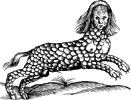Vertebrate Pest Conference Proceedings collection
Date of this Version
March 1990
Document Type
Article
Abstract
After crop losses of 5 to 60% were noted on two 500-acre Jojoba (Simmondsia chinensis) plantings in a desert area of southern California, a study was conducted to identify the animals responsible. Various population census and pestidentification techniques were utilized. Four native rodents of the Heteromyid family, not previously known to be pests of Jojoba, were found to be present in sufficiently high numbers to cause severe economic crop loss. The Bailey's pocket mouse (Perognathus baileyi) was the only rodent previously known to survive on Jojoba beans as a food source. A natural chemical, cyanogenic glucoside, was thought to be the plant protective material responsible for previous failure of rodents to survive on Jojoba in field and laboratory studies. Most of the rodent species found in this investigation were also observed in the laboratory and survived on a ration consisting almost entirely of Jojoba beans for 6 to 10 months. The ability of these rodents to survive on Jojoba beans suggests the possible co-evolutionary development of detoxification mechanisms. Cultural and population reduction practices were recommended and implemented following this study resulting in greatly reduced crop losses.

